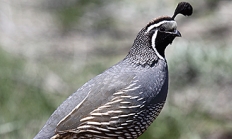
Search myodfw.com
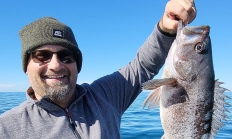
As with all types of hunting, it’s important to choose the right kind of clothing for turkey hunting. Early in the spring turkey season, conditions can be very cold and wet compared to later in the season. At the same time, higher elevations may be colder than the valley floors. The fall turkey hunting season also offers a wide-range of weather conditions, in a variety of places. The weather in October can be very different than conditions in late December. This means proper clothing is important no matter what time of year or where in the state you’re hunting. Layer

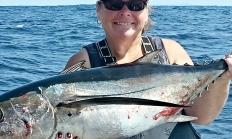

Turkey anatomy plays a big part in determining shot placement with a bow. Knowing where vital organs like the heart and lungs are will help you make a clean shot. Sometime getting to the vital organs may mean going through bone. In fact, a shot to the spine will drop a turkey quickly. But turkey bones are very strong, despite being hollow. That’s why many experienced archers prefer shooting a bow with a heavy draw weight, often the same setup they use for deer and elk hunting. Head shots, the most popular turkey shot for shotgun hunters, should be avoided

The development of the WWA began in 1953 with the acquisition of five parcels of land consisting of 4,400 acres. The Department continued to purchase additional lands, acquiring 1,670 acres in 1954 and another 760 acres in 1955. From 1961 to the present the department has purchased or received another 4,219 acres. The wildlife area currently consists of 12,419 acres owned by the department. In addition, the department, through agreements with the Bureau of Land Management (BLM), manage 1,329 acres within or adjacent to the wildlife area. The WWA was established in response to continuing complaints from landowners concerned with
Winning artwork selected for ODFW’s annual Stamp Art Contests
SALEM, Ore. – The winning artwork has been selected for the 2026 Oregon Waterfowl, Upland Game Bird, and Habitat Conservation Stamp Art Contests. In the Waterfowl Stamp category, first place went to Richard Clifton of Milford, Del., for his artwork featuring a blue-winged teal. For the Upland Game…
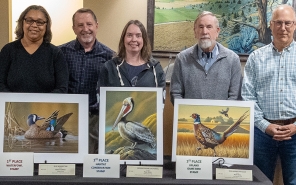
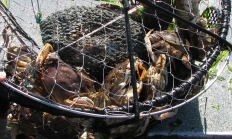
Round Butte Hatchery was constructed in 1972 to mitigate for the fishery losses caused by Pelton/Round Butte (PRB) Hydroelectric Complex. Round Butte and its satellite, Pelton Ladder, are used for adult collection, egg incubation and rearing of spring Chinook, summer steelhead, and sockeye salmon.
Crabbing and Clamming Dec 4, 2025 Always check for closures at the ODA Shellfish Safety page before harvesting shellfish, which includes clams, crabs and mussels. Announcements Chinese mitten crab found in Willamette River A second confirmed Chinese mitten crab, a prohibited species in Oregon, was found and reported to ODFW on November 17 in the Willamette River near Sellwood Bridge. The first mitten crab was caught on April 22 in the Lower Columbia River. Mitten crabs caused significant infrastructure and ecological damage in and around San Francisco Bay when the population was at its height in the late 1990s and


These big, medium-brown sparrows with variable grayish faces and heavily streaked or blotch undersides can be found in summer at higher elevations across much of the state except the Coast Range. Darker brown birds from more northerly breeding populations are common in western Oregon in winter, often coming to feeders, where they scratch like towhees for seed on the ground. Hear the song of the Fox sparrow Photo by Robin Horn, Flickr
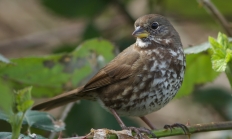

For hunters, spring marks the beginning of the “turkey year” so let’s trace turkey activity through the year beginning in the spring. Spring nesting season The peak of the breeding season has already passed by the time the spring turkey hunting season opens April 15. Toms will breed with multiple hens throughout the spring and early summer. As the eggs develop, the hen will build a ground nest in a place with good cover and close to good brood habitat, which is normally an opening in the forest cover. Once she starts laying eggs, a hen will lay one egg

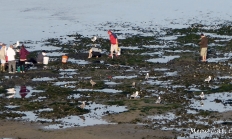
ODFW to host sage-grouse plan webinar July 17
SALEM, Ore. – ODFW staff will host a webinar on July 17 at 2 p.m., to introduce the public to the updated ODFW sage-grouse management plan. The Oregon Greater Sage-grouse Conservation Assessment and Strategy was last updated in 2011. The public is invited to learn about proposed changes to the plan…

California quail are the most widely distributed upland game birds in Oregon. Most easily recognized by the comma-shaped, black, plume, or "topknot," which bends forward and is larger on the male. It has been a resident statewide since the early 1900s, except for most forests of the north Coast Range and west Cascades; it is generally absent along the coast north of Coos Bay. California quail is also absent from high-elevation areas of the east Cascade range. They are common residents in rural and even some suburban areas, particularly in eastern Oregon where many coveys gather at feeding stations during
